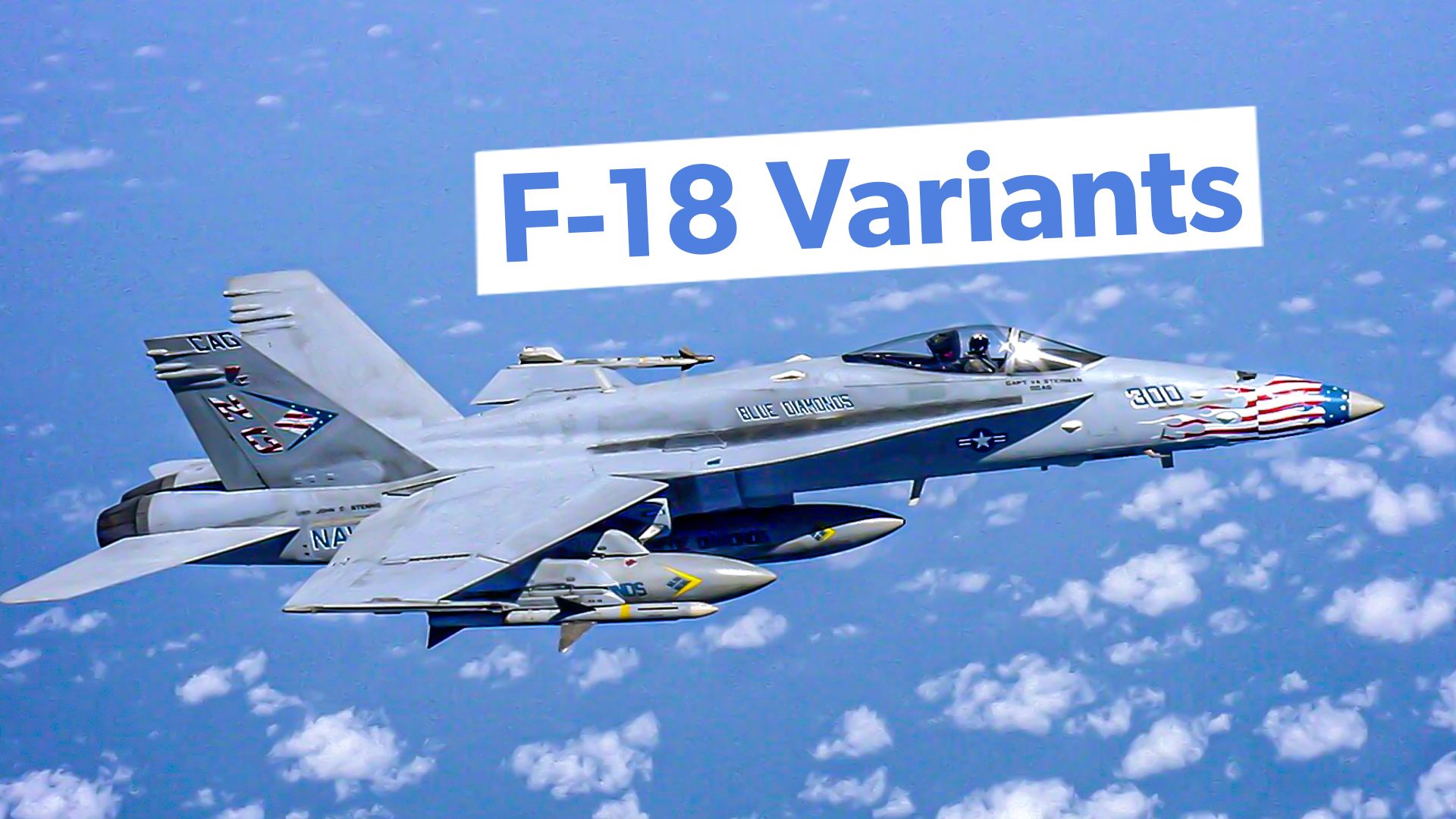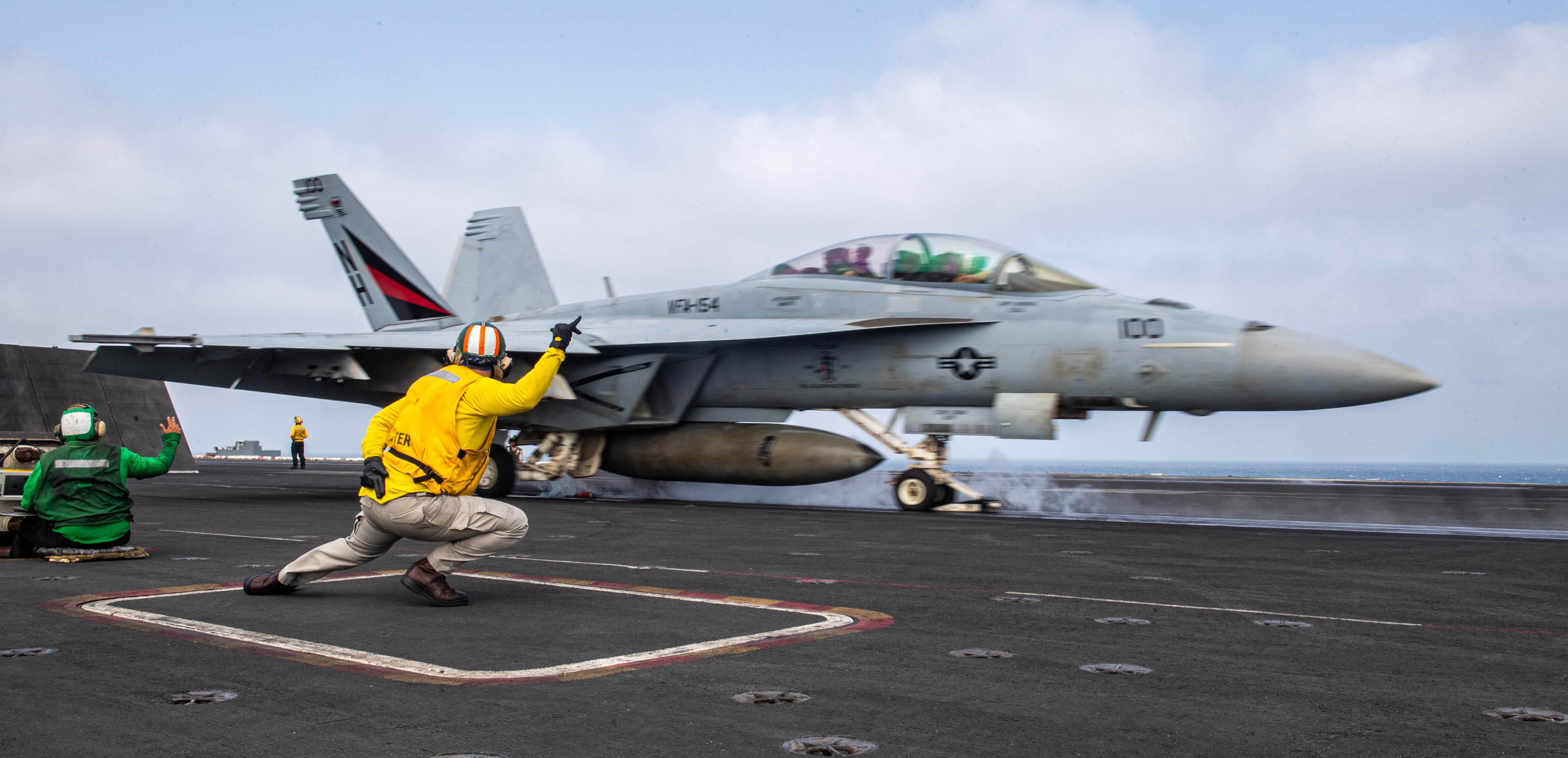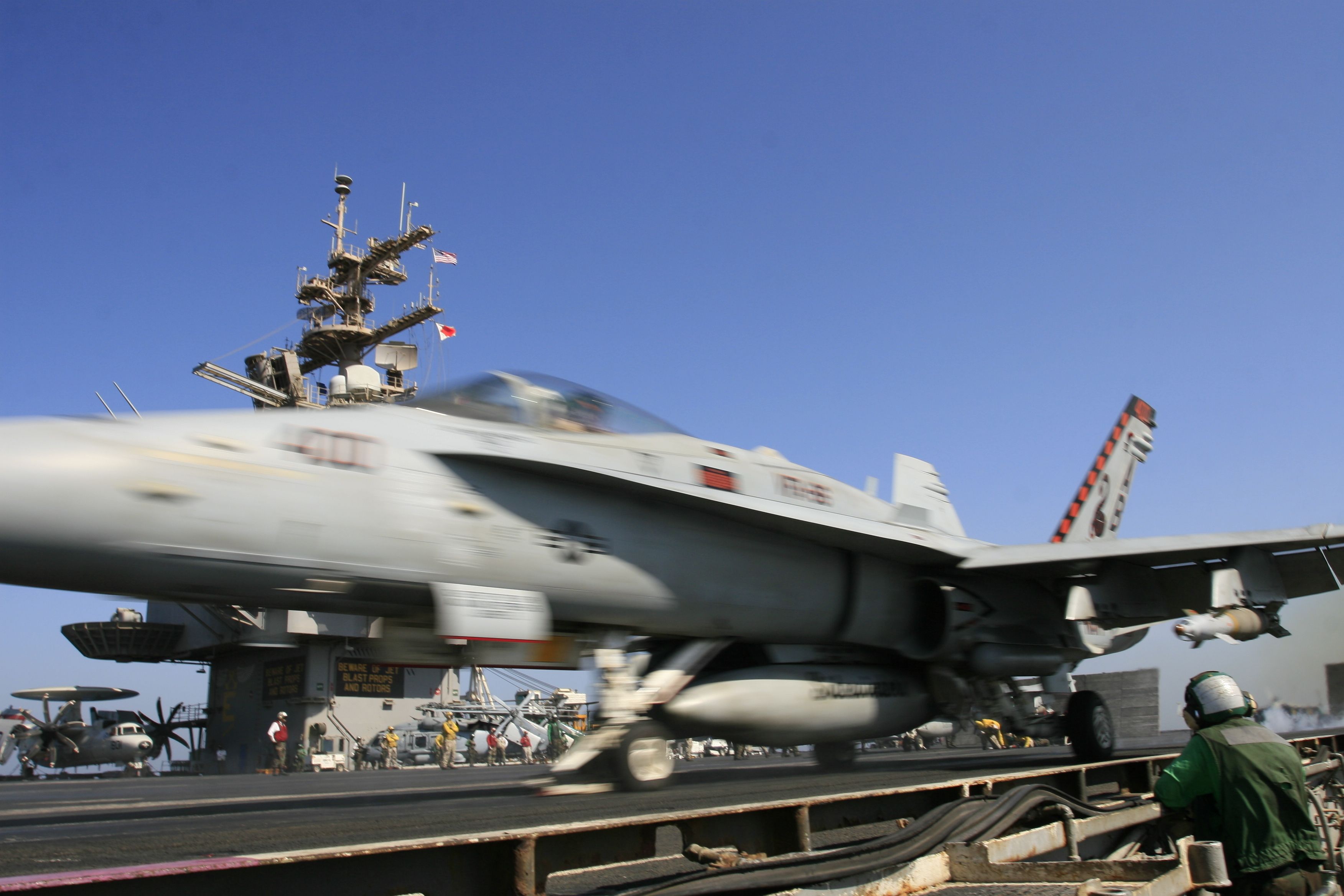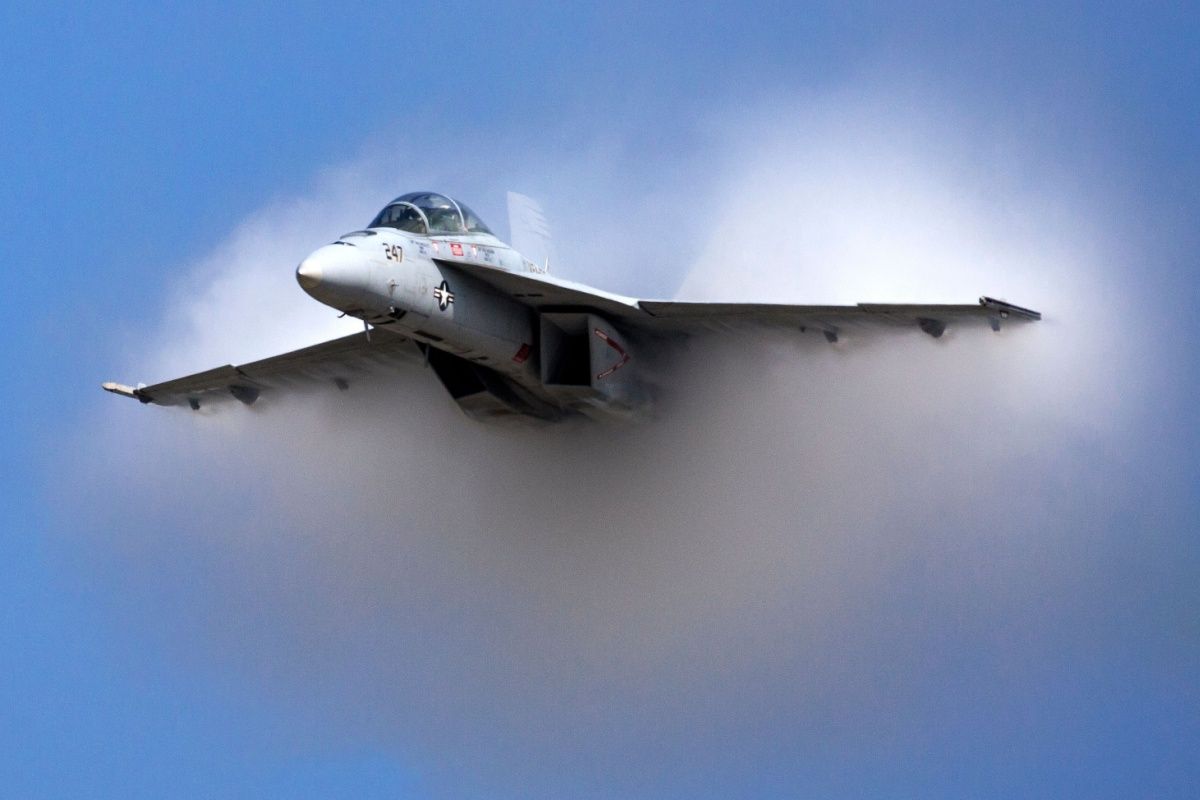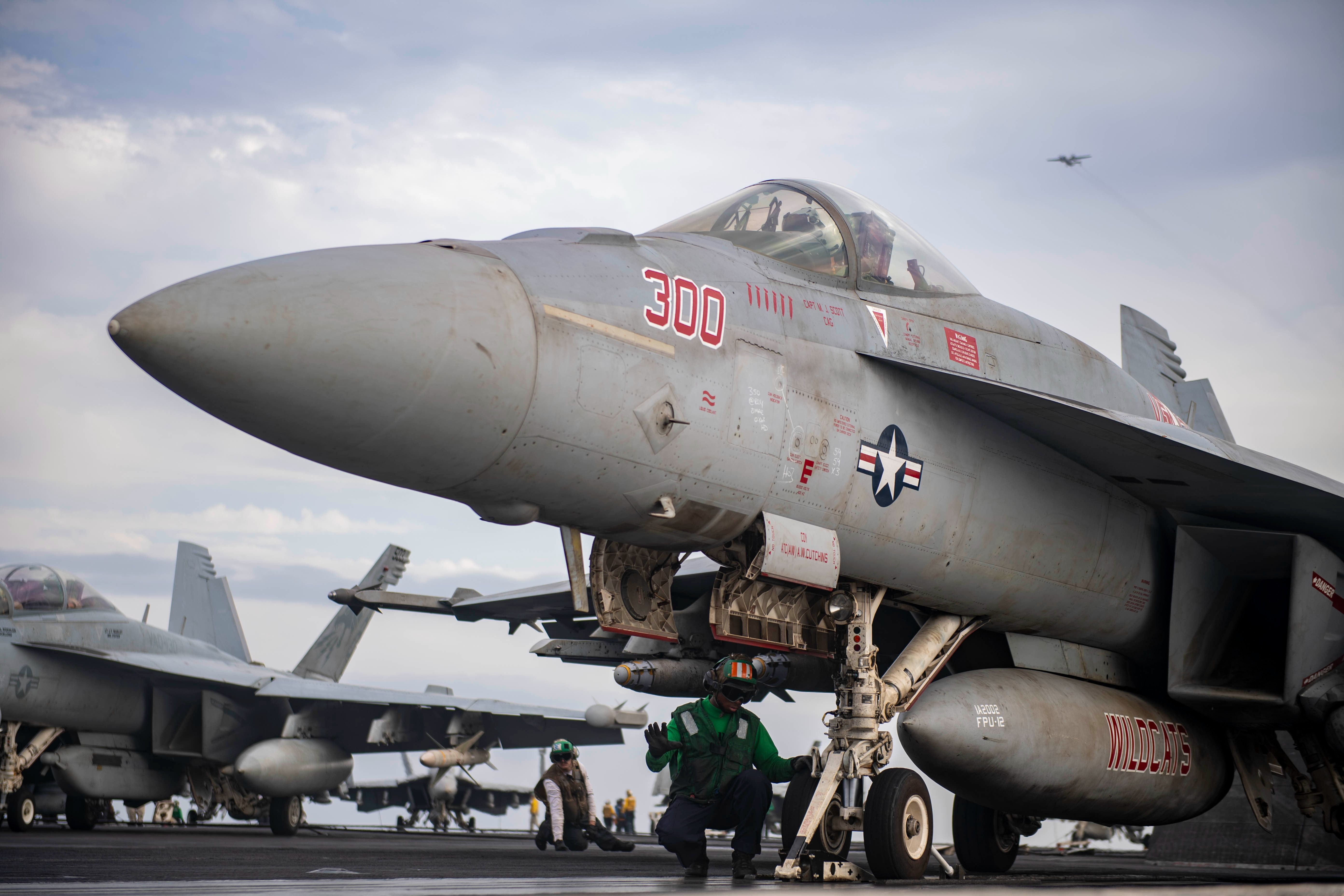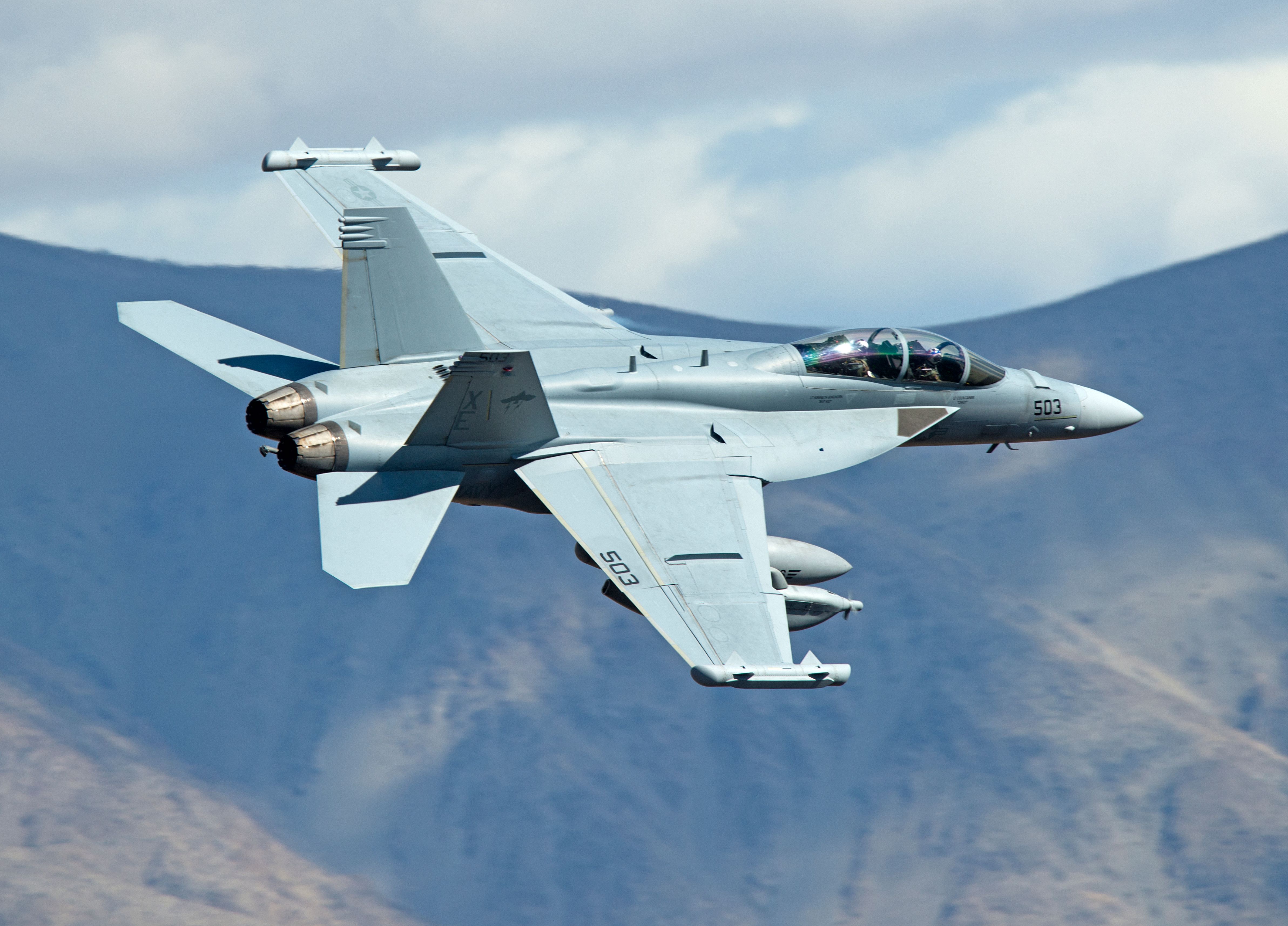The United States Navy operates over 800 examples of the F/A-18 aircraft across all variants. From initial Hornets and Super Hornets to Growlers, the Navy operates these aircraft on various missions. This article explores all seven variants of the F/A-18 aircraft used by the US Navy and the salient features of these naval jets.
1
Several configurations and applications
Single-seat and two-seater aircraft
- F/A-18A Hornet: single seat
- F/A-18B Hornet: two-seat
- F/A-18C Hornet: single seat
- F/A-18D Hornet: two-seat
- F/A-18E Super Hornet: single seat
- F/A-18F Super Hornet: two-seat
- E/A-18G Growler: electronic warfare version of the two-seat F/A-18F
The US Navy operates varying models and configurations of the F/A-18, enabling it to make the most out of the type. The “F/A” stands for Fighter/Attack aircraft, allowing it to be used for different roles. Depending on the model, the aircraft may be equipped with one or two seats and used for different missions.
Photo: USS Theodore Roosevelt (CVN 71) | US Navy
According to the US Navy,
“The F/A-18A and C are single seat aircraft, while the F/A-18B and D are two seaters. The B model is primarily used for training, while the F/A-18A+ and C/D models are used for attack, tactical air control, and forward air control and reconnaissance missions. There have been several block upgrades to the Hornet for enhanced capabilities throughout the platform’s service life.”
2
Training and mission readiness
Two-seater version offers ease of training
- AGM-84 Harpoon
- AGM-65E Maverick
- AGM-88 HARM
- AGM-62 Walleye I/II
- AN/AAS-38 Nite Hawk targeting pod
- AN/ASQ-173 laser spot tracker for targeting
F/A-18B is a two-seat version of the F/A-18A and is combat capable. However, the -18B is mainly used for training of the Navy pilots. The -18B is similar in capabilities and performance to the -18A, allowing it to be the most suitable choice for training.
Photo: Jason and Bonnie Grower | Shutterstock
With the capacity of two pilots, the trainer can supervise the trainee pilot during actual flights. Unlike other aircraft, where the training is dependent on flight simulators, the training variant of the F/A-18 Hornet allows Navy pilots to be proficient and achieve mission readiness before taking on the single-seat F/A-18A variant.
3
Effective recovery from attacks
A proven survivability
- A strike fighter aircraft
- An aggressive attacker
- Highly survivable
- Proven recovery from air-to-air and surface-to-air strikes
The F/A-18 Hornets (A-D) demonstrated their attack and survival capabilities early in their career, particularly during Operation Desert Storm. The Hornets shot down large numbers of enemy aircraft while also targeting enemy sites using a range of bombs. The strike fighter proved to be a lethal contender in a crucial mission.
The military Hornets were exposed to enemy targets, including surface-to-air missiles. In many instances, the Hornets proved their survivability after being hit.
Photo: BlueBarronPhoto l Shutterstock
According to the Navy,
“Hornets taking direct hits from surface-to-air missiles, recovering successfully, being repaired quickly, and flying again the next day further cemented the robustness and survivability of the aircraft.”
4
The new replaced the old
F/A-18E/F replaced the aging F/A-18C/D
- Air superiority
- Fighter escort
- Reconnaissance
- Aerial refueling
- Close air support
- Air defense suppression
- Day/Night precision strike
In the mid-1990s, the manufacturer rolled out the high-performance Super Hornet to replace the aging Hornets. The new variant has a 25% larger airframe, larger air intakes, and more powerful GE F414 engines. The Navy’s F/A-18F is a two-seater version with seats for a naval flight officer in a weapons system officer role.
Photo: USN
According to the Navy,
“The single-seat F/A-18E and the two-seat F/A-18F are high performance, twin-engine, mid-wing, and multi-mission tactical aircraft designed to replace the F/A-18C (single-seat) and F/A-18D (two-seat) aircraft as they reach the end of their service lives and retire.”
5
E/A-18G Growler
Electronic warfare aircraft
- Length: 60 ft 1.25 in (18.31 m)
- Wingspan: 44 ft 8.5 in (13.62 m) (including wingtip-mounted pods)
- Height: 16 ft 0 in (4.88 m)
- Empty weight: 33,094 lb (15,011 kg)
- Gross weight: 48,000 lb (21,772 kg); recovery weight
- Max takeoff weight: 66,000 lb (29,964 kg)
- Internal fuel capacity: 13,940 lb (6,323 kg)
- External fuel capacity: (3 x 480 gal (1,800 L) tanks), 9,774 lb (4,420 kg)
- Maximum speed: 1,030 kn (1,190 mph, 1,900 km/h) at 40,000 ft (12,190 m)
- Maximum speed: Mach 1.8
- Range: 1,275 NM (1,458 mi, 2,346 km); clean plus two AIM-9s
- Combat range: 390 NM (449 mi, 722 km); for interdiction mission
In 2008, the Navy received its first E/A-18G Growler, a tactical jamming and electronic warfare derivative of the Super Hornet. The two-seater version replaced the Navy’s EA-6B Prowler aircraft, covering a larger warfare horizon with the new aircraft.
Photo: Peter R Foster IDMA | Shutterstock
The E/A-18G offers a full-spectrum airborne electronic warfare capability. The aircraft is highly capable of attacking as well as taking self-defense measures where necessary.

